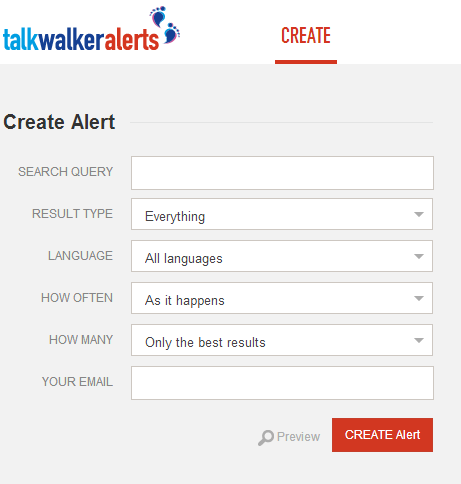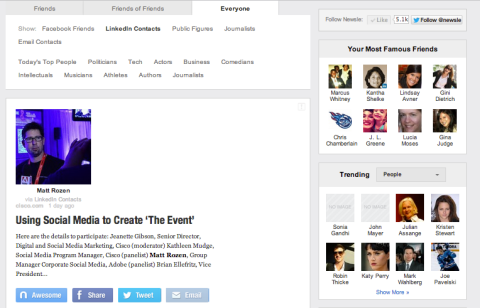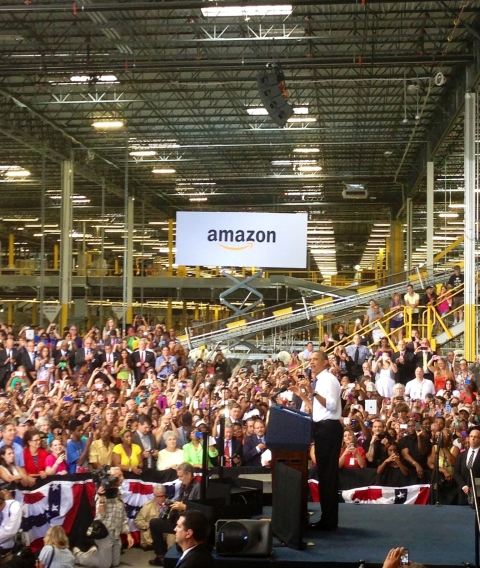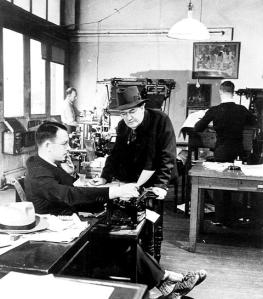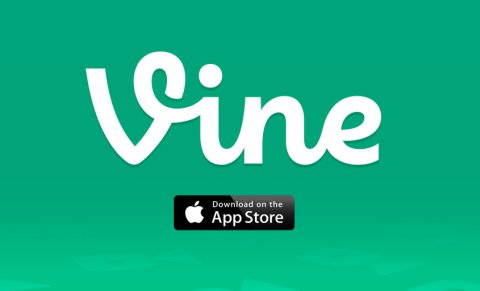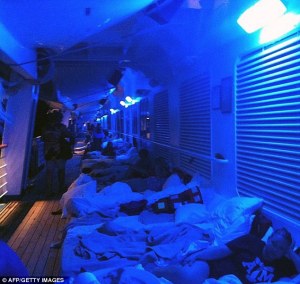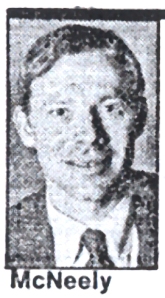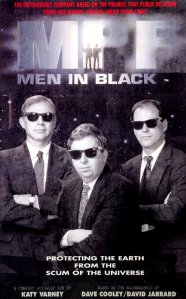Staying Focused, Even Around POTUS
August 2, 2013
By Tom Hayden
As a former professional political communicator, I’ve managed and staffed my fair share of events with elected officials, with big titles such as mayor, representative, senator, governor and even president. One thing that always becomes clear at these types of events is the difference between those staffers who are there to get their personal photo op and those who are there to get the job done. While it is easy to get your head turned among so much excitement, I’ve always held the most respect for those who are more willing to forgo the personal glory in order make sure the event is successful. I was reminded of this again as colleague Sam Kennedy and I helped client Amazon prepare for a presidential event at its Chattanooga Fulfillment Center this week.
Instead of strategizing about ways in which we could be close to the president, Sam and I spent our drive down from Nashville discussing ways to ensure our client’s needs and message didn’t get lost. Once on-site, we set about getting our tasks done, from working with national and local media to helping with staging and working with a wonderful team of Amazon volunteers who played key roles in the event.
With an event of this magnitude, we were interacting with varied interests from the White House, Amazon and the media; but Sam and I kept our focus.
While I wish I had a photo of us smiling with the president, I am more proud of the photo at the top of this post showing a successful event that clearly kept our client front and center. After all, one of MP&F’s mottos is to fulfill our promise to do great work for our clients.
Those pesky questions
June 21, 2013
By Roger Shirley, Editorial Director
One of the goals of a good writer should be to not raise questions in your copy that you don’t answer, a point I emphasize when talking to our younger staffers.
It’s something that was ingrained in me early in my career by a crusty old newspaper editor who had a tendency of mixing heavy doses of screaming and cussing with his insightful coaching.
I remember distinctly the day he called me over to the desk as he edited one of my stories. “Shirley, what the hell does this mean?” he asked with a snarl. I was about 12 words into trying to explain it when he interrupted me, yelling even louder, no doubt to send waves of fear through the other cub reporters within earshot. “Well, we have two options here. You can either add that to your story now, or you can get up at 4 o’clock in the morning and start calling 38,000 people to tell them what it means.”
Good writers anticipate the questions their readers will ask and answer them, whether it is in a news story, a news release, a letter to employees or a memo to a client. Good writers understand that, when they raise a question, they must either answer it or go back and write around it so as not to raise the question. (Sometimes, the latter just doesn’t cut it.)
If you say that “Tennessee has the second-highest consumption rate per capita of Chili Cheese Pups in the nation,” you had better follow that up with which state tops the list, because that is the immediate question raised. If for some reason you don’t know and can’t find out (unlikely in this digital day and age), then you must recast the sentence. “Tennessee has one of the highest consumption rates of Chili Cheese Pups per capita in the nation” works nicely. It generally makes the point, without raising the question.
The problem with not answering questions you raise, beyond the informational aspect of it, is that it often prompts readers to stop reading and to start bouncing around in the copy trying to find the answer – or worse, pay a visit to Mr. Google, never to return to your carefully crafted prose. And for a writer, few things are worse than losing the reader.
When self-editing your drafts, it’s important to try as much as possible to read them from a reader’s perspective and not a writer’s perspective, to ask the questions a reader would ask and see if you have answered them.
That’s easier said than done, of course, which is why there will always be a role for editors, crusty or not.
So we’re coming off a pretty big couple of weeks, huh, Nashville?
The opening of the Music City Center gave us another feather in a cap that is starting to make us look like quite the peacock. With all these people telling us how wonderful we are (I’ll spare you the many links), I guess it only made sense to open a 1.2 million-square-foot building and admit, with a sheepish grin, “Yeah, we are pretty great.”
As I looked out from one of the balconies of the MCC last week, I wondered how newcomers to Nashville would see the city through the prism of this new entertainment district. How would their version of Nashville compare to mine?
We have a great opportunity – and, perhaps, a responsibility – with the Music City Center to ensure our visitors experience the Nashville that we enjoy every day. I think the powers-that-be recognized this, and there are hearty doses of local flavor throughout the building. The Nashville Songwriters Hall of Fame. The $2 million in art installations. The architecture that gives the feeling of being inside a guitar (or maybe a whale). And it’s a good sign that the first big event in the center will be our local Music City Sports Festival.
Is it going to feel touristy? Sure. The MCC is surrounded by hotels, honky-tonks, the Country Music Hall of Fame and Bridgestone Arena. Convention visitors to our city are still going to get the amped-up, ABC television-show version of Nashville, and that’s OK.
But as the city continues to market the MCC and the great new amenities around it, we would do well to incorporate the little things that make Nashville what it is and what it’s becoming. Mention in its promotion that you can escape up to Rolling Mill Hill for great views, some awesome coffee and food from one of the best chefs in the country. Encourage intrepid B-Cyclers to make it over to Five Points, or Jefferson Street, or Centennial Park. Remind them to catch a baseball game at that old college-days couch of a stadium we keep meaning to replace (and to grab a burger at Gabby’s if they’re lucky).
City leaders have made it a point to say that the MCC is for Nashvillians to enjoy. Just as important, let’s make the MCC a place for visitors to enjoy Nashville – the Nashville we know.
What can a PR pro learn from Carnival Cruise Lines?
March 6, 2013
By Will Krugman, intern
Accidental camping – that’s what I would have called the recent Carnival Cruise disaster. Let’s say you paid for a Caribbean cruise, got to enjoy about half of it then decided to just stay in the last port you visited. You ditch the tourist trap town where they dropped you and live in the wilderness in the Yucatan Peninsula. You sleep under the stars, nobody can tell you what to do, and the lack of constantly buzzing electronic devices puts you into a relaxed state of mind.
In reality, an engine room fire cut power to 3,000 passengers, forcing them to live on a powerless boat for the next few days. Even if you wanted your luxurious first-world customs, you couldn’t find any for leagues.
What is a cruise line supposed to do when one of its ships loses power at sea, basically turning the ship into a floating desert island? It’s not as though you can pick up your bags, snatch a cab and head to the airport.
Maybe the lesson learned isn’t “Wow, that company really screwed up,” but more “You know what – that cruise line knows how to make a problem not worse.”
Let’s face it, things could have gone worse for Carnival; but they did not try to cover up the story or shift blame. Besides the obvious disaster, the only other negative press came from its owner going to a Miami Heat game a few days into the crisis. Otherwise, they treated the ordeal as though it was a big deal and gave the passengers fair compensation.
Passengers on the Triumph received a full cost of trip and transportation refund, 30 percent off the next cruise, and $500 extra. That adds up to another completely free cruise. As if they hadn’t had enough already.
Carnival can take comfort in knowing they treated their customers with respect. Next time you find yourself in a hole, first remember to stop digging.
Great people: a key to 25 years of success
December 20, 2012
By Mark McNeely
We’ve been including in our blog posts this year an occasional feature on the 25 questions most frequently asked of us as part of a yearlong celebration of McNeely Pigott & Fox’s 25th anniversary. That celebration officially ends Jan. 1.
I planned on closing out the year pointing to some of the highlights of our agency’s existence. Then I started trying to figure out which I should feature. There were tons of milestones, points of pride, specific successful assignments, and, along the way, many other challenges and disappointments.
So rather than pick a few successes or things that we could have done better, I wanted to hail the culture of our company and its people and talk in broad terms about why both have made a profound difference.
The principals here all come from backgrounds that include journalism, politics and public service. We’ve been around plenty of newsrooms and campaigns where some of the worst working conditions imaginable are experienced. We’ve seen plenty of negative energy expended guarding turf, jockeying for position, playing petty office politics and the like.
From the get-go, we’ve tried hard to minimize these energy drains and to focus relentlessly on doing the very best job we can on behalf of our clients, emphasizing teamwork and being a great place to work, and focusing our competitive nature outward – to our competitors, and not inward.
Our vision statement is still as valid today as it was when we developed it almost 20 years ago – Do great work for our clients, be a great place to work, and be successful enough as a business to share those financial successes with every single member of our team. The shorthand version is “Do Great Work. Have Fun. Make Money.”
For me, the idea of being in business this long has taken awhile to sink in. And it brings an incredible feeling of good fortune and appreciation to all 406 souls – 268 employees and 138 interns – who have been a part of MP&F for the past quarter-century.
So in the spirit that surrounds our traditional holidays of Thanksgiving and Christmas, allow me to publicly and humbly thank everyone who has contributed to our success and helped build MP&F into the largest PR firm in the state and keep it there for many years, including these tough, recessionary and weak economic times.
Every one of my fellow partners is talented, experienced and strategic. Alice Chapman and Andrew Maraniss, who became our newest partners earlier this year, had spent a good deal of their professional lives working here. Over the past 18 years, Alice has managed many successful public information and education campaigns, including the introduction of the ubiquitous “Curby” recycling program a few years ago. She excels in our many grassroots- issues assignments. Andrew cut his teeth doing sports information for his alma mater, Vanderbilt University, where he was a Fred Russell-Grantland Rice scholar, and then was the Tampa Bay Devil Rays’ first media relations staffer. He has led many sports and automotive endeavors since. Both have young families and continually do that work/life balancing act. It sure has worked well. Thanks, guys. Your fresh insights and perspectives have been extremely valuable this year.
Katy Varney, who joined David Fox and Mike Pigott and me as a partner in 1993, exemplifies a rare blend of energy, confidence and optimism that continues to buoy our work product and our spirits. Her one condition of employment (from a job requiring her to take a huge pay cut from her previous employer) was that MP&F conduct annual staff retreats. Mike, David and I said “sure,” even though we weren’t sure what that meant. We have had annual off-site retreats every year since then, and just when we think we’ve done all, seen all and heard all, there’s something new to spice up the planning and bonding experience each year. If Katy has a weakness, it is that she refuses to say no or be daunted by long odds. Therefore, she has served on more volunteer boards and has been involved in more “extracurricular” activities than anyone I’ve ever known. Thank you, Katy, for everything through the years.
Keith Miles has been a partner since 1997. He’s tech-savvy, an expert in new media, and a talented singer/songwriter. He’s low-key and steady and very involved in the foodie scene here. My guess is that we’ve really stymied a promising professional music career because of the time and effort required to manage clients and people here. Keith maintains and uncanny closeness and trust level with many of his clients; some like him because he’s Keith, and some, perhaps, because he golfs and fly-fishes with of them. And if they are ever looking for recommendations for fine food, wine or cigars, he’s the go-to guy. Bravo.
Then there’s Mike, David and me. Reporter friends always trying to figure out some way to turn our love of news and writing into something more personally rewarding. It took a few years of trying to figure it out; but eventually, in 1987, I started the predecessor firm, McNeely & Associates, after I couldn’t figure out how in the world we could generate enough revenue to pay for all three of us. Who would have thought three old (well, actually, pretty young) newspaper reporters could start a business they didn’t know much about, navigate the rocky waters of several recessions and 9/11, struggle through several very lean years at the first and then emerge as a successful enterprise?
My theory has always been because of attitude, hard work, stubbornness and the ability to attract very talented people into the fold. Oh, and luck.
Pigott joined me at the end of 1988, and Fox came into the fold on Jan. 1, 1990. It was very, very tough at first; but things really started to take off when we changed the name from McNeely & Associates to McNeely Pigott & Fox.
And because of Mike and David…
Mike is one of the most talented information gatherers and writers I have ever known. He is gentle and comforting and has a world-class sense of humor. I used to resent him when we were both reporters because of his great source network. He has a beautiful, talented family to whom he is totally dedicated. Like Keith, he is cool, calm and collected, and has been through it all. His advice during times of duress has saved many clients from the brink over the years. And his relationships with reporters far and wide continue to impress. Thank you, Mike, for helping this venture make it.
David is the consummate family man – husband, like Mike, father of three girls, and school and community leader. But he is one of the most competitive, intense, detail-oriented, goal-driven people I have ever known. He is revered by the staff as a teacher and mentor and trainer and is admired by everyone he comes in contact with because of his twinkle and his smile and pleasant demeanor. He’s a great writer, to boot. Just don’t get on the wrong side of him in a basketball game, or a softball game, or a handball match, on the golf course, or doing an egg and spoon competition. Thanks, David, for making us all better every day.
Of course, there are many, many other current and former staff members who have played pivotal roles here; but we are out of time and space for today.
Our 26th year begins Jan. 1. We’ll begin thanking them then.
MP&F’s Top 25 PR Questions
December 7, 2012
McNeely Pigott & Fox is celebrating 25 years in business during 2012, and one of the ways we’re celebrating is by answering the 25 questions we are most often asked about our business.
Question 16: “Can you get my story in the New York Times?”
By David Fox
Here’s a scenario for consideration:
Our client, Santa’s Trees, is having a banner year, with Christmas tree sales up, a new lot on 12South that’s become an instant neighborhood icon, and plenty of celebrity customers to whet the appetite of any news outlet looking for a holiday feature story. Add to that a national trend undergirding this seasonal enterprise, namely a nostalgic resurgence of real Christmas tree sales – and not just real, but fresh. Fraser firs cut last week in North Carolina. Or Noble firs, fresh from Oregon. We’re talking a perfect, old-fashioned Christmas. At a time of virtual, digital overload, the promise of chestnuts, open fires and REAL Christmas trees resonates with even the most cynical among us.

Santa’s Christmas Trees operates Christmas tree lots in the greater Nashville area. Each location offers premium frasier fir trees, wreaths, garlands and other holiday greenery.
So is that a story for the New York Times? It may be the hook on a national trend piece. What about the Wall Street Journal? We see stories like this all the time in USA Today. Could it be worth a pitch?
Virtually every newsworthy, local enterprise can make the case that it deserves national coverage. But can you really get national coverage on a local story, even one with national appeal?
Let’s start with the basic reality check: They, i.e., national reporters, don’t care about your story. They care about the story they want to tell, and if your story helps them do that, great. The trick is to find the reporter whose interest aligns with yours. And that is the proverbial needle in the haystack. But that’s what PR firms are trained to do.
The truth is, you gain national media coverage by building to it over time. That means building visibility for your brand, building relationships with national reporters and building the case for national coverage.
For example, the celebrity customers who have visited the Santa’s Trees lot in 12South include Hayden Panettiere, star of the “Nashville” TV show. The show’s current ‘newsworthiness’ could help interest national media. The visual appeal of the story is another factor that could help. A video capturing the excitement is another possibility. Anything that makes the pitch more compelling helps. It’s all about packaging the pitch.

Photo from http://beta.abc.go.com/shows/nashville
Next is the process of getting it to the right reporter or editor in the right way. That means you have to know whom you want to pitch it to. Building relationships with national reporters is key. Having a friend at the New York Times works wonders but those are rare, and those who have them guard them carefully. Sometimes national publications have local stringers, so knowing that person can help as well. Ultimately, you have to figure out how to deliver the pitch. Social media has broadened the options, but it’s a matter of determining which vehicle makes the most sense. Does the reporter you have in mind have a Twitter feed? Perhaps he or she would consider a story idea shared as a tweet.
The bottom line is that getting a story covered in a national publication takes a lot of work, perseverance and a good amount of luck. And then there are those serendipitous times when the story falls in your lap, which is like a gift from Santa Claus.
MP&F’s Top 25 PR Questions
November 19, 2012
McNeely Pigott & Fox is celebrating 25 years in business during 2012, and one of the ways we’re celebrating is by answering the 25 questions we are most often asked about our business.
Question 15: What are some of the common mistakes people make when they hire a PR firm?
By David Fox
One of the best questions we get asked is: “What are some of the common mistakes people make when they hire a PR firm?” When you get that question, you know there’s an understanding that “mistakes” can happen on both sides of the relationship. So here are a few pitfalls to avoid:
Mistake #1: Fuzzy expectations. Clarity is a beautiful thing. When you’re establishing a relationship with a PR firm, it is important to spell things out clearly from the start.
Begin with a clear statement of exactly why you are hiring the firm. What’s the goal? What do you hope to achieve? If you’ve gone through an RFP process to hire a firm, you’ve probably had to think through the answer and put it down in writing. That is a good first step. If you can explain clearly why the firm has been hired – not only the official reason but the cultural dynamics that led to the decision – you are giving your agency a huge gift. You’re giving them their marching orders.
Remember, “Culture eats strategy for breakfast.” That is, if a strategy is not in sync with your company’s culture, it will be the strategy that suffers. So if you have a strategy in mind when you hire an agency, be sure it is consistent with the company’s culture. And be sure your agency understands that culture on the front end.
Another place for clarity is in the area of budget. When you are beginning a relationship focused on communicating your good news, it can be an exciting time. But don’t let the excitement keep you from working to establish cost parameters and making sure everyone understands and accepts them.
Mistake #2: Lack of transparency. Like most relationships, a client-agency partnership is all about trust. You need to share all the information the PR firm will need to present your organization in the best light – in other words, they need to know a lot more than you want the rest of the world to know. It will then be up to the agency to use that information discreetly and wisely. If they fail, then they weren’t the right agency for you. But if you don’t share information openly with them, their chances of success are greatly diminished, especially if they are caught off guard.
Mistake #3: Taking only the advice you want to hear: One important value of an agency is its distance from the inner workings or your organization, which allows objective counsel. So take their advice, even if it’s not what you want to hear – even if it’s to talk to the media when you don’t want to.
Case in point: We represented a company that had reason to believe a local media outlet was biased against them. As a result, they had refused to talk to that outlet, and the resulting coverage they received was negative – thereby reinforcing the impression of bias. Our assessment, after reviewing coverage, was that the perception of bias was incorrect. We could see why our client had a concern; but we believed the media outlet would provide objective coverage if presented with information in an open fashion, and so we advised the client to visit the outlet. Reluctantly, they agreed. The result was a cathartic – and lengthy – clearing of the air between both groups, and resulting media coverage which was not only fair but extremely thorough and accurate, resulting in a happy client.
Ultimately, the worst mistake you can make is thinking your relationship with a PR firm will be mistake-free. Mistakes happen. Dealing with them is what good PR firms do best.
MP&F’s Top 25 PR Questions
August 23, 2012
McNeely Pigott & Fox is celebrating 25 years in business during 2012, and one of the ways we’re celebrating is by answering the 25 questions we are most often asked about our business.
Question 11: What is the difference between advertising and public relations?
“You pay for advertising. You don’t pay for public relations.”
That’s not true, but that is the answer often given to anyone looking for a distinction between advertising and public relations. (Before I go further, I’d like to acknowledge that there are entire books dedicated to advertising and PR. So, for today, I’m going to focus on some differences between the two as they relate to media.)
One key difference comes down to two of the many different ways McNeely Pigott & Fox helps clients get messages out to various audiences:
- Paid media
- Earned media
Paid media is coverage received strictly because of monetary exchange, and often seeks to increase recognition. Traditional examples are advertisements and sponsorships.
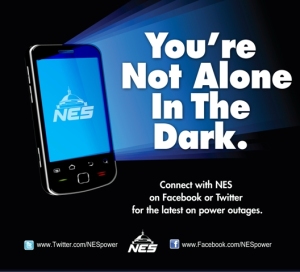
This is an ad we created for Nashville Electric Service (NES) to raise awareness of its presence on Twitter and Facebook.
Earned media is coverage received due to perceived relevance, and often seeks to increase credibility. Traditional examples are television coverage resulting from a media advisory and articles in a newspaper.
This distinction between “paid” and “earned” can be confusing because companies can now purchase air time on news programs in addition to purchasing ads. And, many companies pay people (communications directors, PR agencies, etc.) to draft news releases, place guest editorials and manage all manner of earned media efforts.
So maybe a better angle to discuss is public perception. Seeing an ad for something – whether a product, service or issue – sends a different message to consumers than does a feature news story on that same topic.
Everyone knows that people with the money to do so can place an ad and say just about anything they want. Everyone also knows that there is a bigger challenge involved when trying to get a member of the media to devote time and attention to something.
As mentioned above, it gets down to recognition and credibility.
Both the paid and earned media approaches have pros and cons and neither is definitively right or wrong. It all comes down to what you are trying to promote and your communication goals.
Paid media is often a good match for branding efforts and announcements: brand recognition, services provided, contact information … just about anything the consumer would expect to hear directly from the company.
Earned media is well-suited for persuasive content: issues-based and awareness campaigns, grassroots efforts, and of course, political campaigns.
At MP&F, what we offer is the ability to use paid media, earned media and all of the other communication tools available to help you achieve your messaging goals.
So … what’s the difference between advertising and PR? It all depends on you.
